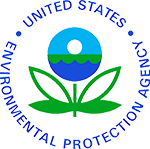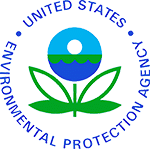Close your eyes for a moment and envision something: a life without air conditioning units, without that constant coil-produced cool airflow in the heart of the sweltering summer’s heat. Try fantasizing about rooms stifled with an inferno-like heat while an ice cream quickly turns to soup. Doesn’t that terrifying thing make you appreciate air conditioners, our saviours of summertime, even more? One cannot underestimate the importance of an efficient air conditioning system in your house, whether it’s a traditional or ductless unit. However, water leaks, blocked air vents, or coil damage can cause the units to malfunction leading to unbearably hot days, which no one wants. Your air conditioner, or even your heat pump, show signs of these problems, it’s crucial to identify the issues and the possible ways to rectify them by using troubleshooting tips. The power supply could falter, the circuit breaker or panel might trip, dust and dirt could clog vents, or all manner of things could crop up. Before you spend any of your hard-earned money on an HVAC service or an expert technician, arm yourself with knowledge about 10 ways to troubleshoot your malfunctioning AC equipment for better performance and improved efficiency, ensuring that the cool air graces every corner of your place.
Taking troubleshooting into our own hands involves more than a basic understanding of the electronic components involved, like the electrical wiring, and the thermostat settings that control your cooling system. You also need to know things such as the location of the fuse, the function of the air filters, possible blockages in the vents, and much more. As responsible adults, it’s our duty to learn the workings of our air conditioner to ensure it functions perfectly and our house remains at optimal temperatures.
1. The AC Won’t Turn On
If your air conditioner won’t turn on, that’s a clear sign something might be wrong. Start by checking the exterior unit. Ensure the unit is plugged in and the thermostat is properly set. If everything looks good yet the AC still won’t work, inspect it further for any blown fuses or tripped circuit breakers. Doing so can help you isolate potential electrical faults and solve the AC problems promptly.
2. Runs, But Doesn’t Cool the Air
When it comes to the indoor ventilation, a common issue is less cooling than expected. Dirt or dust blocking the air filters or malfunctioning air vents could be a thing responsible for this. In this case, your AC runs with the thermostat on, but you won’t notice any change in the surrounding temperatures. Noticing such an AC malfunction, start by checking the outdoor unit or inspect for blocked ductwork that might impede air circulation.
The second step should be to check your air filter and ensure that it’s clean. Remove it, and try to see through it. If you can’t, replace it. A dirty air filter can cause substantial reduction in airflow and cooling efficiency.
3. Cool But Not Cold Enough
To rectify insufficient cooling, look for restrictions like twigs, debris, leaves, and shrubbery that may prevent air from reaching the condenser coils. Another factor could be low levels of refrigerant inside the coils. If your AC unit is exposed to the sun, consider creating shade around it.
4. Produces Weird Noises
You may hear weird noises when the AC starts up or as it runs. The noises could include rattling sounds, buzzing and ticking. These could indicate an issue with the compressor or another internal part.
Stop these sounds by tightening a loose screw or lubricating the joints. If that fails, you may need to buy a new capacitor or enlist the help of an expert in AC systems to inspect the motor that runs the fan.
5. Starts but Shuts Off After a Short Time
If you experience inconsistent cooling, the problem could be the location of your thermostat. A poor thermostat settings location may result in wrong temperature readings, forcing the AC to work harder than necessary. Relocate it to a different position and see if the air conditioner works properly.
6. Water from the AC Leaks into the Ceiling or Walls
A noticeable accumulation of water or water leaks around your AC unit may signal a blocked or disconnected hose or tube. To fix this leak, check for any causes of restrictions in the drain line to ensure condensation drains freely.Begin by unclogging all tubes, hoses, and firming up their connections. If you hear a strange noise or smell something off, it could be a signal that something isn’t right. This could be an issue with the water heaters or doors blocking the air circulation. If the issue persists or grows, do not hesitate to make an appointment for a professional inspection. Our technicians are experts at identifying the root cause and finding the right solution for every type of system.
7. High Electricity Bills
When you’re at home, lower the AC’s thermostat setting to about 78 degrees Fahrenheit to meet your cooling needs. This strategic adjustment not only improves the air quality but also ensures efficient operation of your home’s air ducts, doors, and furnace. Meanwhile, ensure that the power supply to your home appliances, including furnaces and water heaters, is stable. If you notice any irregularities or a persistent smell, it might be time for a furnace cleaning or repair. At night, or when you’re away from home, close your windows and raise the temperature. This strategy improves energy efficiency and can help you save on your air conditioning bills by 5 to 15 percent.
8. Weak AC
Is your AC not operating as powerfully as it used to? Does it take longer to cool down the home? To solve this, check the outer unit, pipes, and drains for any debris and remove it. Regular checks include the cleaning and maintenance inspections of the ductwork, coils, as well as doors, air ducts and windows which can improve the efficiency of your AC unit, helping to meet your cooling needs.
9. The Thermostat Red Light is on
The accumulator or thermostat’s red light should only flash or stay on during an emergency. If you see it during normal operation, chances are a hitch, likely due to a tripped circuit breaker or a faulty capacitor, has triggered the outside unit to shut off. In this situation, the right solution is to switch off the thermostat, wait for about thirty seconds and switch it back on.
10. The AC Blows Hot Air
When you notice this, check the thermostat to ensure you didn’t accidentally set or leave it in the “fan” or “heat” mode. A wrong mode selection can lead to reduced cooling, or even blowing hot air. Rectify this type of situation by setting it to the “auto” or “cool” mode.
If you ever notice an AC system failure that you can’t fix, such as a strange noise or an unusual smell, don’t hesitate to contact us at The Cooling Company (702) 567-0707. Our team of technicians is always ready to help you with any challenging conditions that your air conditioner, furnace or even your air ducts and water heaters might pose.












